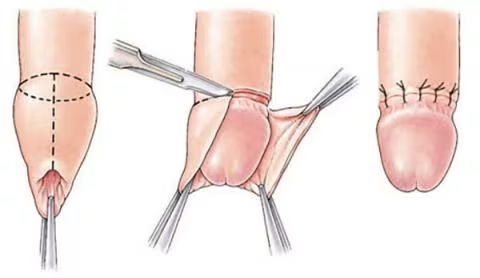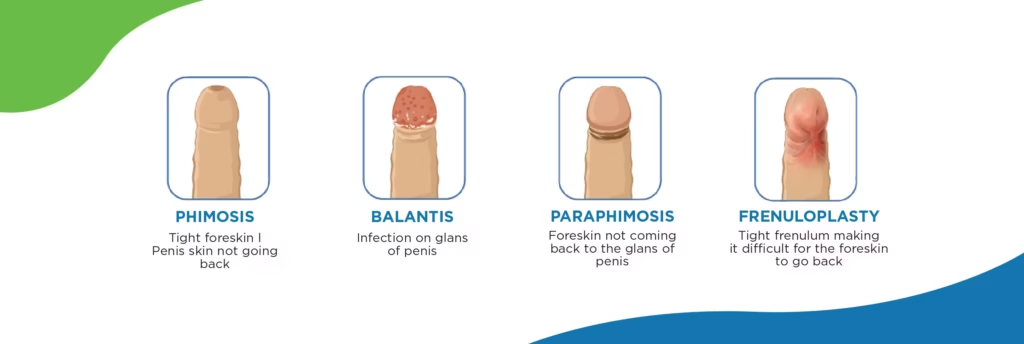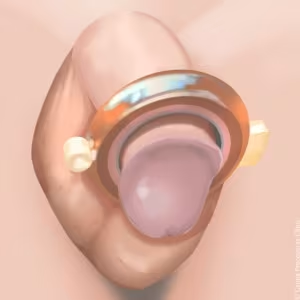Circumcision is a common surgical procedure in Singapore, with approximately 14.9% of the population having undergone this treatment.
Whether you’re considering circumcision for your child or as an adult, this comprehensive guide will provide you with all the essential information about the procedure, its benefits, recovery process, and available options in Singapore.
What is Circumcision?

Circumcision is a surgical procedure that involves removing the foreskin, which is the skin that covers the glans (head) of the penis.
After the procedure, the glans penis remains permanently exposed. The procedure is performed for various reasons, including medical necessity, religious practices, and personal preferences.
You might be interested: Testosterone Replacement Therapy in Singapore: Symptoms, Causes, Benefits
Why is Circumcision Performed?

There are several reasons why individuals in Singapore opt for circumcision:
Medical Reasons
- Phimosis: A condition where the foreskin is too tight to be pulled back over the glans penis, causing discomfort and hygiene issues.
- Paraphimosis: When a retracted foreskin becomes trapped and restricts blood flow, requiring immediate medical attention.
- Recurrent Foreskin Infections: Persistent infections (balanitis or balanoposthitis) that don’t respond to conventional treatments.
- Frenulum Breve: A short frenulum that tears during intercourse, causing pain and bleeding.
- Urinary Tract Infections (UTIs): Circumcision can reduce the risk of UTIs, particularly in infants and young boys.
- Prevention of Penile Cancer: Studies show circumcised men have a lower risk of developing penile cancer.
This might be helpful: Male Infertility in Singapore: Causes, Diagnosis, and Treatment Options
Symptoms That May Indicate the Need for Medical Circumcision
If you or your child experiences any of these symptoms, it may be worth consulting a doctor about circumcision:
- Pain during urination
- Painful erections
- Frequent urinary tract infections
- Bleeding or thick discharge
- Unpleasant odor
- Swelling or tenderness of the penis
Read more: Erectile Dysfunction Treatment in Singapore
Religious and Cultural Reasons
Circumcision holds significant importance in several religions and cultures:
- In Judaism, it’s performed on the eighth day of life as part of the brit milah ceremony.
- In Islam, it’s widely practiced as a Sunnah (tradition of Prophet Muhammad).
- Various indigenous and cultural groups practice circumcision as a rite of passage or cultural tradition.
Hygiene and Health Benefits
Research has shown several potential health benefits of circumcision:
- Improved Hygiene: Easier to clean the penis and reduce the buildup of smegma.
- Reduced Risk of STIs: Studies suggest circumcised men have a lower risk of contracting HIV, HPV, and other sexually transmitted infections.
- Lower Risk of Penile Problems: Decreased chance of inflammation and infection of the penis.
- Female Partner Benefits: Female partners of circumcised men may have a lower risk of cervical cancer and vaginal infections.
Related article: HIV Testing in Singapore: Everything You Need to Know
Different Types of Circumcision Procedures in Singapore
Conventional Surgical Circumcision
This traditional method involves removing the foreskin using a scalpel or surgical scissors.
Procedure Time: 30-60 minutes
Recovery: Approximately 2 weeks
Benefits:
- Can be customized to the patient’s aesthetic preferences
- Suitable for addressing specific medical conditions like phimosis
- Provides surgeon with precise control over the procedure
Considerations:
- Longer procedure time compared to other methods
- May cause more post-operative pain
- Higher risk of bleeding
- Requires sutures
You might like: A Comprehensive Guide to In-Vitro Fertilisation (IVF) in Singapore
Laser Circumcision
This technique uses a focused laser beam to remove the foreskin and cauterize blood vessels.
Procedure Time: 20-30 minutes
Recovery: Approximately 2 weeks
Benefits:
- Precise cutting
- Potentially less bleeding due to cauterization of blood vessels
- May offer more precise results
Considerations:
- Recent studies show no significant reduction in bleeding or infection rates compared to conventional methods
- Similar duration and pain levels to conventional circumcision
You might be interested: Understanding Low Libido in Women: Causes, Treatment and Impact
Stapler Circumcision
This innovative technique uses a specialized circular stapling device to cut the foreskin and surgically “staple” the edges in one motion.
Procedure Time: 10-15 minutes
Recovery: Approximately 2 weeks
Benefits:
- Quick procedure
- Good control of bleeding
- No sutures needed
- Uniform results
- Reduced complications
Considerations:
- Risk of device malfunction, which may require switching to conventional method
- Some devices may not be approved by Singapore’s Health Sciences Authority
You might like: Abortion in Singapore: A Comprehensive Guide
Shang Ring Circumcision

The Shang Ring method is a minimally invasive procedure using two concentric plastic rings that clamp the foreskin securely.
Procedure Time: 10-15 minutes
Recovery: Approximately 2 weeks
Benefits:
- Minimal tissue trauma
- Sutureless procedure
- Minimal bleeding
- Fast procedure
- Can use topical anesthetic cream instead of injections
Considerations:
- The ring remains in place for 7-10 days until wounds heal
- May be less familiar to some patients compared to traditional methods
Comparison of Circumcision Methods
| Technique | Advantages | Disadvantages |
|---|---|---|
| Conventional Surgical | – Widely practiced and reliable – Suitable for all ages and conditions | – Longer procedure (30-45 mins) – More post-op pain – Higher risk of bleeding – Sutures needed |
| Laser | – Precise cutting – May cauterize blood vessels, potentially reducing bleeding | – No proven reduction in bleeding or infection – Similar duration and pain to conventional |
| Stapler | – Quick (15-20 mins) – Good vascular control – No sutures needed | – Risk of equipment failure – May require switch to conventional if device malfunctions |
| Shang Ring | – Fast (10-15 mins) – No injections (topical cream only) – Minimal pain – Sutureless | – Ring remains for ~1 week – Less familiar to some patients compared to traditional methods |
Child Circumcision in Singapore
When is Circumcision Typically Performed on Children?
For infants, circumcision is often performed within the first few days after birth.
This timing is preferred because there are lower chances of complications and less downtime.
However, circumcision can be performed at any age, including during childhood or adolescence.
Child Circumcision Procedure
Child circumcision at hospitals like KK Hospital does not involve the use of a Plastibell device, so there are no components to remove after the procedure.
Depending on the child’s surgeon, there may be a transparent dressing applied to the penis.
Stitches and Pain Management
- Stitches: Either absorbable stitches or glue will be used, so there will be no need to remove any stitches post-surgery.
- Pain Management: After surgery, your child will be prescribed oral painkiller medication (paracetamol). He may have a smarting sensation when urinating initially, for which he can apply an anaesthetic gel (lignocaine gel).
Recovery Period for Children
- Children will typically receive a medical certificate for two weeks after circumcision.
- Some boys may be able to go back to school sooner if their wounds heal more quickly.
Adult Circumcision in Singapore
Adult circumcision procedures generally follow the same techniques but have some specific considerations.
Special Considerations for Adult Circumcision
- Adult circumcision is typically done under general or local anesthesia.
- The procedure may have a higher risk of complications and take longer to heal compared to infant circumcision.
- Procedure duration is typically 30-60 minutes.
- Recovery time is approximately 2 weeks, but full healing may take up to 4 weeks.
Adult Circumcision Procedure Steps
- Anesthesia is administered (either local or general) to ensure comfort throughout the procedure.
- The doctor will make measurements to determine how much skin to remove.
- The foreskin is cut away with a surgical instrument (scalpel, laser, or specialized device).
- Either absorbable sutures or surgical glue will be used to close the wound.
Post-Circumcision Care and Recovery
Wound Care After Circumcision
- For Children:
- Continue showering as normal after the operation.
- Wear loose clothing (e.g., sarong) until the wound is dry.
- Ensure the child doesn’t pick at the scabs to avoid bleeding.
- Do not allow straddling toys, cycling, or swimming until the wound has healed.
- For Adults:
- Keep the wound clean and dry.
- Wear loose-fitting clothing and avoid tight underwear until the wound heals.
- Avoid strenuous physical activities for about 4 weeks after the procedure.
- Abstain from sexual activity for approximately 6 weeks or until your doctor approves.
Managing Bleeding
If there is slight bleeding after circumcision, apply a clean gauze to the wound and hold for a few minutes.
If there is persistent bleeding, seek immediate medical attention at an emergency department. Do not eat or drink until the wound has been assessed by a doctor.
Normal Post-Procedure Expectations
- Some soreness and swelling for 2-3 days after surgery is normal.
- Applying a small ice pack to the penis can help minimize bruising and swelling.
- Swelling may persist for 2-3 weeks after the procedure.
- The head of the penis may be dry after circumcision for some individuals.
Recommended Sleep Position
To avoid putting pressure on the surgical area, it’s advisable to sleep on your side with your knees tucked into your chest.
Financial Aspects of Circumcision in Singapore
MediSave and Insurance Coverage
Good news for those considering circumcision in Singapore:
- Circumcision procedures are MediSave claimable, capped at $650 per patient.
- Most insurance policies also cover this procedure when medically necessary.
- Many medical facilities work with several insurers to assist in post-procedure billings and claims processes.
If you’re unsure about your insurance coverage, it’s advisable to contact your provider or consult with the medical facility before proceeding with the surgery.
Choosing the Right Circumcision Procedure
Selecting the most suitable circumcision procedure depends on various factors:
Age Considerations
- Certain procedures are more appropriate for infants, while others are better suited for adults.
- For infants, parents might prefer methods with minimal pain and quick healing.
- Adults may prioritize aesthetic outcomes and comfort during recovery.
Medical Condition
If you have specific medical conditions like phimosis or recurrent infections, your doctor may recommend particular techniques that address these issues more effectively.
Recovery Time Preference
If minimizing downtime is important to you, consider methods with shorter recovery periods like the Shang Ring or Stapler techniques.
Aesthetic Preferences
Different methods offer varying cosmetic results, such as the placement of the scar line and overall appearance. Discuss your preferences with your doctor before the procedure.
Cost Considerations
While circumcision is MediSave claimable in Singapore, different procedures may vary in cost. Specialized techniques might have a higher price tag compared to conventional methods.
Frequently Asked Questions
At what age should circumcision be performed?
Circumcision can be performed at any age, but it’s commonly done shortly after birth (1-2 days) as there are fewer chances of complications and less downtime.
However, the procedure can be safely performed on older children, adolescents, and adults when necessary.
Will circumcision affect sexual function or pleasure?
Contrary to some misconceptions, research suggests that circumcision does not negatively impact sexual function or pleasure.
Many studies show that over 90% of men report being “very satisfied” with the outcome post-circumcision.
Some studies even suggest that circumcision may lead to a lower incidence of premature ejaculation and increased sexual endurance.
Is circumcision painful?
For infants and children, pain is managed with appropriate anesthesia during the procedure and pain medication afterward.
Adults undergo the procedure under local or general anesthesia, ensuring comfort during the operation.
Post-operative pain can be managed with prescribed painkillers and typically subsides within a few days.
How long does the recovery process take?
The recovery time varies depending on age and the specific procedure used. Generally, the initial healing takes about 10-14 days, but complete recovery may take up to 4-6 weeks.
Children often heal faster than adults. During this period, it’s important to follow all post-operative care instructions to ensure proper healing.
Are there any risks or complications associated with circumcision?
Like any surgical procedure, circumcision carries some risks, though they are generally rare when performed by experienced professionals.
Potential complications include bleeding, infection, wound dehiscence (separation), cosmetic concerns, and very rarely, ischemia of the tip of the penis.
Following proper post-operative care significantly reduces these risks.
How much does circumcision cost in Singapore?
The cost of circumcision in Singapore varies depending on the facility, the doctor’s expertise, the type of procedure, and whether it’s performed under local or general anesthesia.
The procedure is MediSave claimable up to $650, and many insurance policies provide coverage. It’s advisable to check with specific medical facilities for current pricing.
Can adults get circumcised?
Yes, adults can certainly get circumcised. Many men choose adult circumcision for medical reasons like phimosis, recurrent infections, or for personal or cultural preferences.
Adult circumcision procedures typically require local or general anesthesia and may have a slightly longer recovery period compared to infant circumcision.
How do I choose the right doctor for circumcision?
When selecting a doctor for circumcision, consider their specialization (urologists have specific training in male reproductive health), experience with the procedure, the techniques they offer, and patient reviews.
It’s also helpful to have a consultation to discuss your specific concerns and preferences before making a decision.
Will there be a visible scar after circumcision?
All circumcision methods will leave some form of scar where the foreskin was removed. However, the visibility of the scar varies depending on the technique used, the surgeon’s skill, and individual healing factors.
Over time, most scars fade significantly and become less noticeable.
Is general anesthesia necessary for circumcision?
General anesthesia is not always necessary for circumcision. For infants and young children, local anesthesia is often sufficient.
For adult circumcision, the choice between local and general anesthesia depends on patient preference, anxiety levels, and the specific procedure being performed.
Some methods, like the Shang Ring technique, can be performed using only topical anesthetic cream.
Conclusion
Circumcision in Singapore is a common procedure performed for various medical, religious, and personal reasons.
With multiple techniques available, each offering distinct advantages, patients can choose the option that best suits their specific needs and preferences.
Whether you’re considering circumcision for your child or as an adult, it’s important to consult with a qualified healthcare professional to discuss the most appropriate procedure for your situation.
By understanding the benefits, risks, and recovery process associated with circumcision, you can make an informed decision about this procedure.
Remember that proper post-operative care is crucial for optimal healing and to minimize complications.
Follow your doctor’s instructions carefully, and don’t hesitate to seek medical attention if you notice any unusual symptoms during the recovery period.

